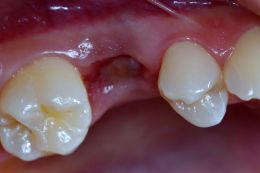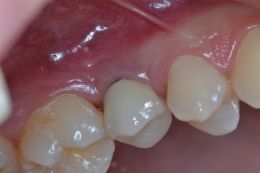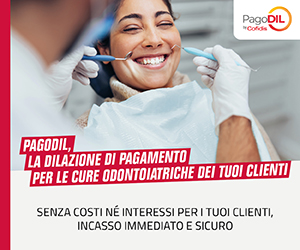When edentulous alveolar bone in the posterior sites of the maxilla is not sufficient, because of the proximity of the Sinus, an elevation of the membrane is required to create the suitable space to put an Implant with a predictable rate of success. Owing to their less morbidity, recently are increasing in popularity among cilinics, some transcrestals procedure. Nevertheless not all of them are always predictable or lead at the same regenerative results.
One delayed post extractive implant 10 mm x 4,1 was inserted in a 27 y.o. female patient.
At T=0 the residual bone crest was 4 mm high. After elevating a full thickness flap, the insertion has been done according to the Minimal Invasive Sinus Elevation procedure where the sinus membrane is gently elevated by a Bio material pushed up by the same Implant during insertion.
After 6 months the Implant was uncovered and protesized as usual.
After the firts year the patient has been followed up each 6 months for 5 years.
The measurements of the bone gain has been made by rx endo at 6 months and by CTCB, after 1 year. The evidence of the generation of an high quality bone all around the Implant and beyond the Implant apex, between Implant and Sinus Cortical bone has been of + 8mm, creating a 2 mm thick and stable bone also beyond the Implant apex.
This is the usual result in 30 similar clinical cases treated in the last 5 years.










Dentista Lombardia, Bergamo
Vedi la scheda
Dentista Toscana, Pisa
Vedi la scheda
Dentista Lazio, Roma
Vedi la scheda
Dentista Piemonte, Alessandria
Vedi la scheda
Dentista Emilia Romagna, Parma
Vedi la scheda